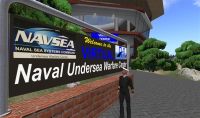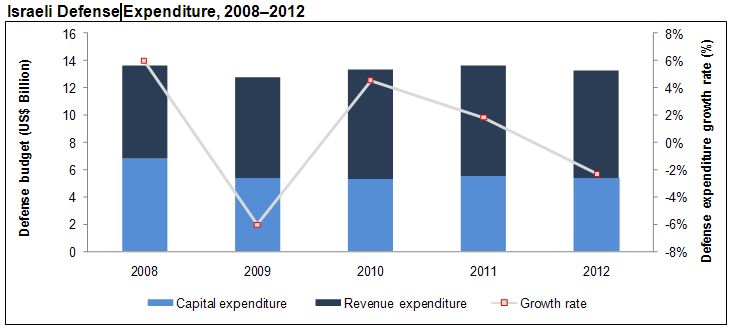WASHINGTON, May 11, 2011 — The Navy is exploring virtual worlds for applications in the air and under the sea, including the real-time design of future command-and-control spaces for submarines.
At the Naval Undersea Warfare Center’s Division Newport in Rhode Island, Steven Aguiar is the virtual worlds technical program manager.
In late 2007, the Division Newport leadership set out to determine whether “rapidly evolving technologies like gaming engines, Web 2.0 and a new thing called virtual worlds could impact our undersea warfare domain,” Aguiar told American Forces Press Service.
At the time, Aguiar designed advanced computer systems for submarine attack centers. “Even with that fairly focused domain knowledge,” he said, “I could appreciate that virtual worlds like Second Life had a lot of potential for rapid prototyping of command-and-control spaces, training of systems or tactics and visualization of data analysis.”
Nearly four years later, Aguiar said, his team is looking hard at Second Life, Teleplace, RealWorld, Open Simulator and other virtual worlds “to understand their strengths and weaknesses and limitations as we apply them to military requirements.”
This includes “bringing the virtual worlds into our laboratory, firing them up and getting some hands-on experience,” he added. Division Newport supplies the technical foundation for conceptualizing, developing, fielding, modernizing and maintaining Navy undersea systems. The work ranges from research to supporting fleet operational capabilities and especially applied research and system development. Virtual world capabilities lend themselves to many of these tasks, he said.
Aguiar’s team describes virtual worlds as the coming together of gaming engines, Web 2.0 and classic modeling and simulation. “The real-time dynamics of the environment is the power of virtual worlds,” Aguiar said.
As avatars, he added, users can walk into any 3‑D virtual environment and have the freedom to interact with each other and with the environment as if they were truly collocated in a physical space.
“If you think of those as the core capabilities,” he said, “different problems we come across take advantage of some of those features.” Training is one of the most effective ways to use virtual worlds, Aguiar said.
“We can very easily and quickly, sometimes even in real time, create training content that shows, say for tactical computer displays, how the data is generated,” he said. In a virtual world, student avatars can actually walk into life-sized tactical plots rather than staring at an image on a computer monitor. “It’s almost like [being able to] climb a double-helix DNA molecule,” he said. “You can turn what would have been a passive classroom session where somebody’s lecturing on how that plot is generated into an interactive experience where the user is literally walking into the data.”
Such a capability, which research has shown to greatly improve a student’s absorption of fundamental concepts, Aguiar said, makes virtual worlds “stand out from all of the other ways you can give out training.” And in a virtual world, lots of things can be done at once.
For the Naval Undersea Warfare Center, these include visualization, immersive learning, conferencing, outreach, joint forces collaboration, command and control, distributed modeling and simulation, curriculum enrichment, international collaboration and scenario simulation.
In a virtual training environment, a remote instructor can teach student avatars from all over the world in a single virtual classroom. When the students are finished with that, Aguiar said, they can walk out the door and jump into a serious game, say a scenario simulation event where they’re piloting a submarine and doing tactical missions. Then they can go into some kind of command-and-control experiment.
“One of the powers of a virtual world is that it gets away from stovepiped training concepts and allows the integration of [traditional] and virtual training components in a single environment,” he said.
Beyond training, Aguiar said, “I know my Army and Air Force brethren are interested in virtual worlds for what I would call scenario simulation — creating a virtual environment that matches a real-world environment so they can do some type of group scenario.”
At NUWC, he said, “we’re using it for collaborative engineering.”
In this application, Aguiar and his team are exploring the use of virtual worlds for three phases of command-and-control design. First, they work with the Office of Naval Research and directly with the fleet to generate a series of future attack center spaces in real time.
Through workshops, fleet participants and Office of Naval Research subject-matter experts meet in virtual-world workshops from wherever they are in the country, Aguiar said, “and in real time we build out these attack centers.”
In a 45-minute session, he added, “as fast as the fleet could say, ‘I want this display here and I want to move this function there,’ we’re able to capture and build out a full future attack-center concept.”
Next, NUWC uses models generated during the rapid prototyping of command-and-control spaces to visualize how people interact with the tactical data. “Specifically,” Aguiar explained, “we visualize how information flows from person to person and person to console through that space as the mission evolves.” The information tells designers how the space will operate when it’s built.
In the third phase, which Aguiar’s team demonstrated in August 2009, they took a Virginia-class submarine attack center model and put it into a virtual world. “The critical technology piece is that we were able to take the virtual displays in the virtual attack center and connect them to the real tactical systems,” he said. “The fleet operators, as they’re sitting down as avatars looking at tactical displays, have full remote control of those tactical systems.” Aguiar calls this team-level application sharing.
“Not only could each operator see their own screen, they could turn their heads and see their neighbor’s screen or talk to their neighbor,” he said. Or a commanding officer or analyst could stand behind a group of people and talk to them and see everybody’s screen while everybody is remotely distributed on the network, he added.
“The real people can be anywhere, sitting in front of a generic console,” Aguiar said. “But once they’re in that virtual attack center they have the critical elements they need to perform as a team, practicing or experimenting on a real mission — human dynamics, the model environment and connection to live tactical systems.”
Although this was a small demonstration, Aguiar added, “in our demo, we witnessed equivalent performance whether they were working in the virtual space or the physical space.” Another benefit, he said, is the potential cost savings realized by doing rehearsal and planning activities in a virtual space before holding a live concept-of-operation experiment event.
Elsewhere in the Navy, the leadership at Naval Air Systems Command headquarters in Patuxent River, Md., is exploring the value of virtual worlds. Karen Cooper is the principal investigator for Future Workforce Technologies and Strategies at the Naval Air Warfare Center Aircraft Division, and is spearheading virtual world investigation. Cooper said within the Navy, the Naval Sea Systems Command is the leader in virtual-world development efforts and the Naval Air Warfare Command is the leader in validation and empirically testing these worlds to calculate their real value “beyond the bling and beyond the build.”
Navair, she said, is working “to examine whether virtual worlds really [deliver] a return on investment, increased performance, better understanding, shortened time to learn, and rapid prototyping and acquisition streamlining.”
Navair is also partnering with Navsea’s Carderock Division, which is leading an innovation prototype that involves virtual worlds, Cooper said. Navair’s role is to make sure that people actually learn in virtual world scenarios and that the environment is engaging.
Working on the prototype is a team of specialists from Navsea Carderock and Philadelphia, from Rowan University in New Jersey, and Cooper from Navair Patuxent River in Maryland.” For the six-month project, Cooper said, the commands are working together on a shipboard emergency-response training scenario which is begin developed in the virtual world Teleplace.
In the scenario, she said, a sailor as his avatar is working at a virtual console from which he controls engine-room equipment. The training involves something that goes wrong in the engine room and this shows up as alerts on the console. The sailor must take certain actions to respond to the emergency.
“As a training scenario we can use virtual worlds to observe the sailor’s response, including response time and response patterns,” Cooper said. The virtual simulation also can accommodate a group of sailors to accommodate team building skills including communication, coordination and leadership skills.
“We can actually record the scenario and then play it back as an after-action review,” she added.
On a real ship or in a large, high-end mock-up simulator, she added, “we’d only be able to send one or two sailors through every two hours, and it would be significantly more costly.”
“The powerful part, Cooper continued, “is because the scenario is available in a virtual world, you can set up training around the clock and the instructors and learners can be geographically dispersed.”
In this effort, Cooper said, the commands are partnering with Rowan University in Glassboro, N.J. Students are helping build the training infrastructure in the virtual world and receiving credit at the university for their work.
The Navy commands are also working together to draft a virtual world roadmap for the Navy, Cooper said. The roadmap is still in draft form, she said. But the hope is that eventually it will go before the commands and then to the chief of naval operations.
Cooper said the Navy also is contributing to an Army-led effort called the Federal Virtual World Challenge, an annual public competition for developing the best uses of virtual worlds.
Navy evaluators joined others from the Defense Department to choose recipients of challenge awards. The 2010 theme was training; this year it was artificial intelligence. Navair leads the evaluation portion of the challenge, she said.
“Part of the purpose behind the challenge is to advance the state of virtual world technology specific to the theme of the year,” Cooper explained, “but it’s also to create cross expertise and knowledge growth across the DOD.”
These are all examples of joint DOD and Navy partnerships along with academia, she added, to grow and advance the state of the technology.
Source:
U.S. Department of Defense
Office of the Assistant Secretary of Defense (Public Affairs)

 von
von 
